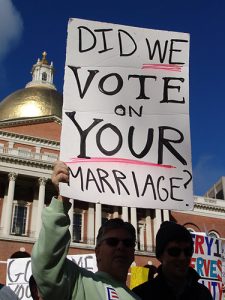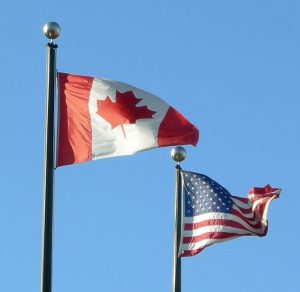
During the first week in December, the Supreme Court decided to hear the critical case of American Electric Power Company v. State of Connecticut next spring. The case is fundamental since the decision will have a direct impact on the regulation of greenhouse gas emissions. The case originated in 2004 when eight states (New York, Connecticut, California, Iowa, New Jersey, Rhode Island, Vermont, and Wisconsin) filed suit against six major US power companies (American Electric Power Co., American Electric Power Service Corp., Southern Company, the Tennessee Valley Authority, Xcel Energy, and Cinergy Corp.). As reported by Warren Richey of the Christian Science Monitor the prosecution “seeks a judicial order declaring that the fossil-fueled power plants are a ‘public nuisance.'” They also want “a judicial order capping the plants’ greenhouse gas emissions” along with a mandate that power plants “adopt a schedule of reduced emissions in future years.”

The prosecution claims that these six power companies “emit 650 tons per year of carbon dioxide, or roughly one-quarter of the US electric power sector’s carbon-dioxide emissions.” Furthermore, these vast quantities of emissions may affect “an abrupt and catastrophic change in the earth’s climate.” The prosecution also argues that within the next century the country will face “prolonged heat waves, increased smog, beach erosion, inundation of coastal land with sea level rise, more droughts and floods, increased wildfires, and reduced biodiversity.” The cost of the damage that these climate changes are projected to wreak on “the environment, residents, and property” is estimated to be roughly a billion dollars.
A representative for the defendants, who provide electricity for millions of American homes in twenty-one states, rejected the legitimacy of the prosecution’s case, saying: “Virtually every entity and industry in the world is responsible for some emissions of carbon dioxide and is thus a potential defendant in climate change nuisance actions under the theory of this case.”

In an act of solidarity with the power companies, twelve states (Indiana, Arkansas, Hawaii, Kansas, Kentucky, Nebraska, North Dakota, Ohio, Pennsylvania, South Carolina, Utah, and Wyoming.) filed a “friend-of-the-court brief.” In the brief, Thomas Fischer, the Solicitor General of Indiana, wrote: “The theory of liability being advanced here has no limiting principle. It would permit federal courts to impose CO2 emission limits on any entity in the country, and one might reasonably expect that the major economic actors of each state, not to mention state government entities themselves, would be on a list of potential defendants.”
The significance of the case revolves around two points: (1) who may be considered, and held, responsible for contributing to global climate change, and (2) who has the legitimate authority to regulate greenhouse gas emissions. The defendants perceive the weight of these points, but believe that these questions should be answered on the level of policy and not in the courtroom. The Obama administration, as well, filed a brief indicating that the Environmental Protection Agency, under the auspices of the Clean Air Act, has been given the responsibility of regulating emissions from power plants. According to the brief, the EPA is currently investigating how regulation can be most effectively achieved.
Liberal Evangelicals are practiced in weighing the arguments and evidence presented by both sides. And, they are adept at generating innovative solutions that draw from the strengths of both while attempting to minimize the harmful aspects of each. In the case of American Electric Power Company v. State of Connecticut, it seems that the method employed by Liberal Evangelicals may present a productive and viable way forward. The stakes are high, and the issues are relevant. Americans need electricity and Americans need a healthy environment. Americans need to protect the natural resources of the land and Americans need a stable economy. When the polarization of argumentation is diminished, new potential solutions rise to the surface, as Liberal Evangelicals know quite well. So, in this case, is it possible that the issues could be reframed? Could possible solutions derive from rethinking the way Americans consume energy and the way Americans generate electricity. Could possible solutions arise from rethinking the way Americans relate to nature and the way Americans structure their economy? The beauty of the Liberal Evangelical approach is that it is not limited to the realm of religion alone. This method is fruitful for other areas of life as well.
Links
To read Warren Richey’s article “Supreme Court takes Global Warming Case that Targets Power Companies” in the Christian Science Monitor click here.



